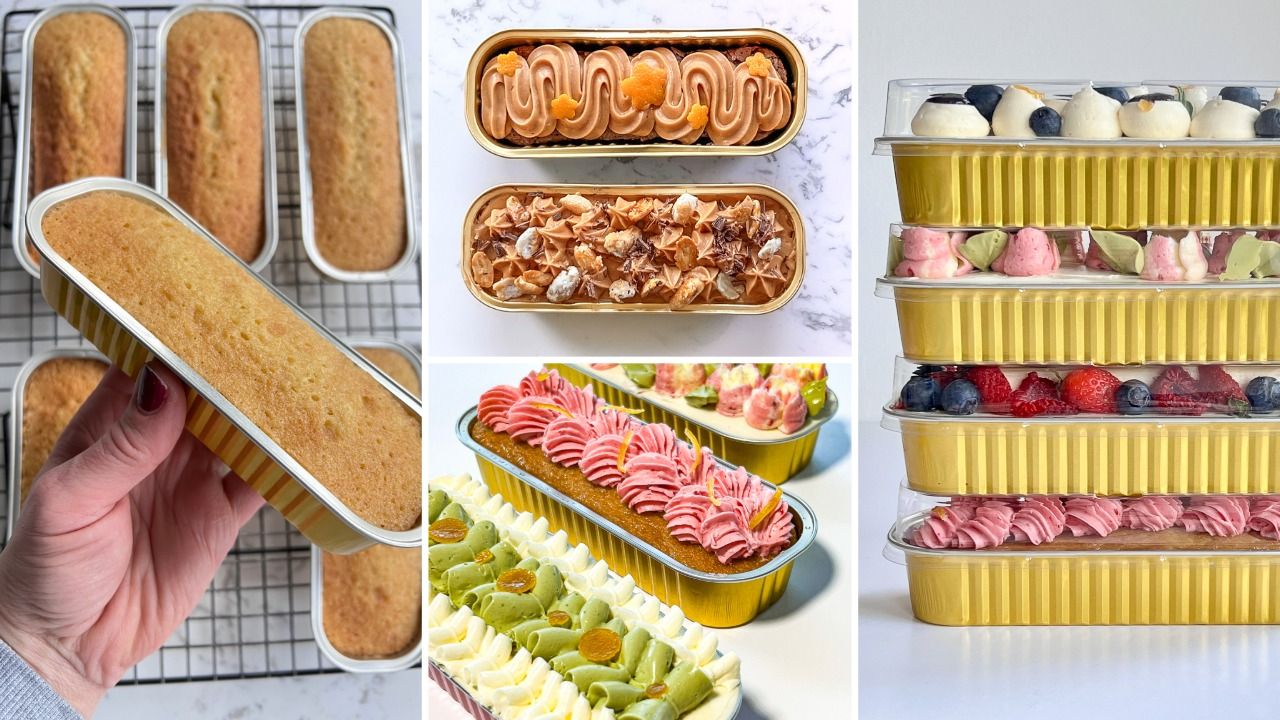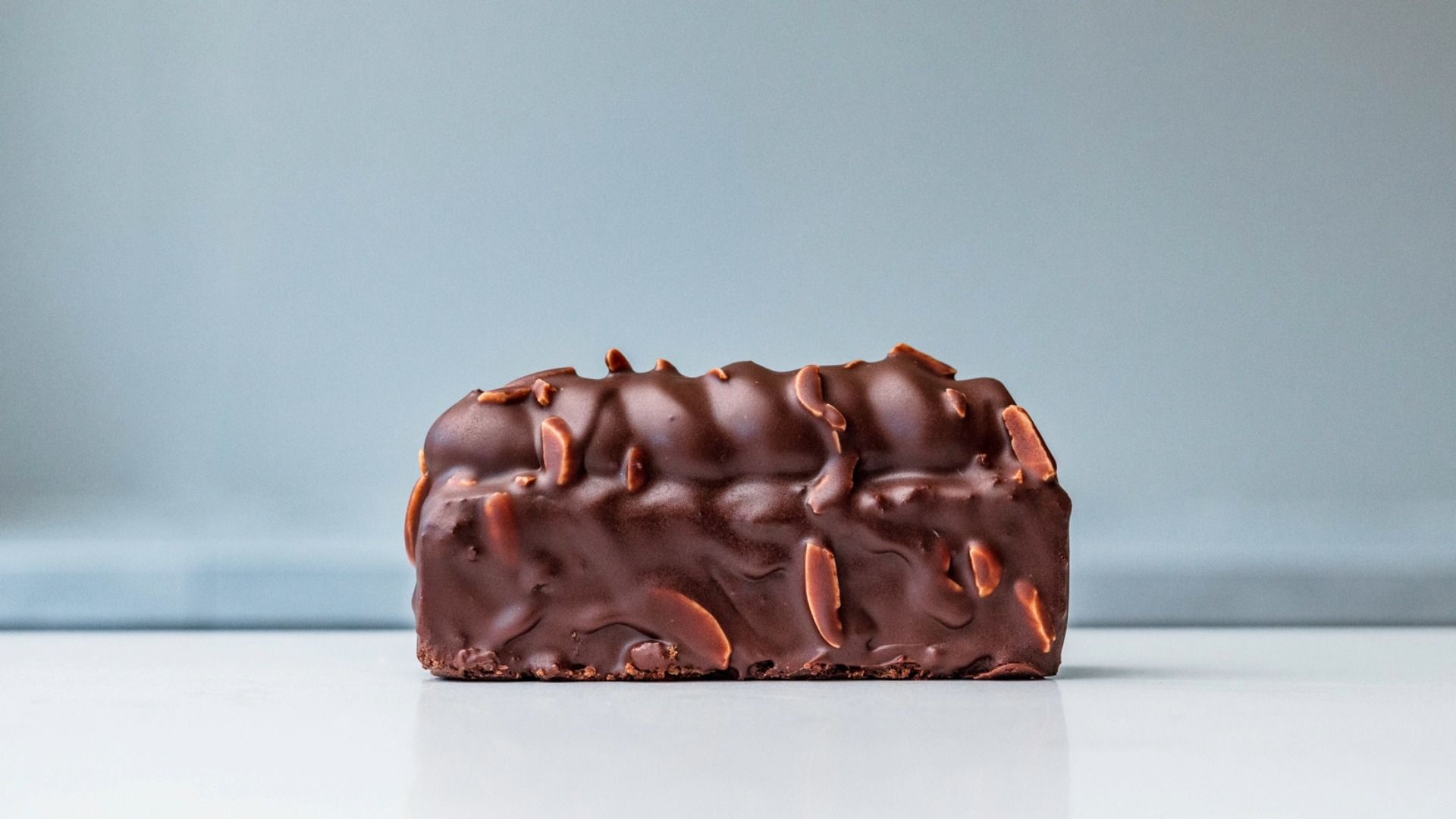How To Avoid Common Problems With Mini Loaf Pan Cakes

Mini loaf cakes are on the rise (pun intended). They’re fun to bake, easy to transport, endlessly customisable, and perfect for any occasion. Whether you want a simple teatime treat or an elegant cake to sell, mini loaf cakes deliver every time.
But as popular as these little cakes are, they come with unique challenges:
-
How much batter should you use?
-
How do you bake them evenly and keep them moist?
-
How do you decorate them so they still fit in their lids?
👉 I’m here to help. After testing my 6.5oz mini loaf tins (approx. 15.5 x 5.3 x 3 cm), I’ve put together a comprehensive guide to avoid common mini loaf cake problems.
→ Want the complete system?
Explore Mini Loaf Cakes Made Easy - my best-selling framework with recipes, decorating techniques, and business tips:
Home Bakers' Edition - CLICK HERE
Baking Business Edition - CLICK HERE

Selection of Mini Loaf Cakes
How Much Batter Should You Use in Mini Loaf Pans?
If your mini loaf cakes are coming out half-empty or overflowing, you’re not alone. Batter quantity is key.
👉 General guidelines:
-
Dense sponges (almond-based): Fill more, as they don’t rise much.
-
Light sponges (Victoria sponge, white cake): Rise more, so fill less.
→ Best tip: Test your recipe in your specific tin and use tested recipes for mini loaf pans:
→ Related blog: Perfecting Mini Loaf Cakes: A Batter Measurement Guide - CLICK HERE

Lemon Almond Mini Loaf Cakes
Consistent Portions = Even Baking
If you’re selling mini loaf cakes, consistency matters hugely — uneven portions can ruin your reputation.
👉 Solution: Weigh your batter:
-
Place empty tin on digital scale → zero it out.
-
Pipe exact same weight into each tin → consistent baking & professional results.
Want to bake perfectly even mini loaves for gifts or sales?
→ Mini Loaf Cakes Made Easy Business Edition - CLICK HERE Includes full batter weight guide + selling tips.
How to Prep Mini Loaf Pans for Easy Release
Avoid stuck sponges with these pro tips:
High-fat cakes: Butter + flour the tins.
Chiffon / Angel food: Skip the grease (helps batter cling).
Low-fat sponges: Grease only the base of pan.
How to Avoid Overbaking Mini Loaf Cakes
Mini loaf cakes bake fast — it’s easy to overbake them.
✔️ Use an oven thermometer → most ovens run hot or cold.
✔️ Rotate tins halfway → for even heat distribution.
✔️ Check when they are done:
-
Light golden sponge
-
Gentle press springs back
-
Clean skewer inserted comes out clean
Add Moisture with Simple Syrup
Worried about dry mini loaf cakes? Simple syrup is your friend.
✅ Use naturally moist recipes (oil-based, nut-based).
✅ Brush on a soaking syrup: equal parts sugar + water → flavour with citrus, rum, or spices.
→ Learn more about cake storage here: Cake Storage Made Simple - CLICK HERE

Banana, Cardamom, Dulcey & Walnut Mini Loaf Cake
Buttercream Tips for Mini Loaf Cakes
Buttercream is your best friend for decorating mini loaf cakes — but you need the right one:
✅ American Buttercream — simple, quick
✅ Swiss Meringue Buttercream — less sweet, creamy
✅ Italian Meringue Buttercream — my pro choice: silky, stable, pipes beautifully
Want to master sponge + buttercream pairings for stunning mini loaf cakes?
→ Mini Loaf Cakes Made Easy Home Edition - CLICK HERE → perfect for hobby bakers ready to elevate their cakes.
Almond Lemon Mini Loaf Cake
Buttercream-Free Decorating Ideas
Not a buttercream fan? Try these:
-
Candied fruit or nuts → adhere with apricot jam
-
Caramelised sugar, crumbs, brittle → add crunch
-
Chocolate glaze → drizzle + top with toasted nuts
These tips and many more are included in Mini Loaf Cakes Made Easy:
Home Bakers' Editions - CLICK HERE
Baking Business Edition - CLICK HERE
Start Baking Better Mini Loaf Cakes Today!
Mini loaf cakes are fun, beautiful, and full of potential — whether for home baking or selling at markets.
→ Want a stunning recipe to add to your repertoire today?
🍫 Dubai Chocolate Mini Loaf Cake Recipe - CLICK HERE
→ Get my FREE Mini Loaf Cake Piping Guide - CLICK HERE → and learn pro tips for decorating mini loaves beautifully.
Happy baking — your perfect mini loaf cakes are just one bake away!
Join The Pastry Edit
Weekly guidance for bakers who want to move beyond hobby baking and grow into confident, skilled, profitable professionals.
By subscribing, you’ll receive my weekly baking insights, digital product updates, and exclusive offers. You can unsubscribe anytime.





